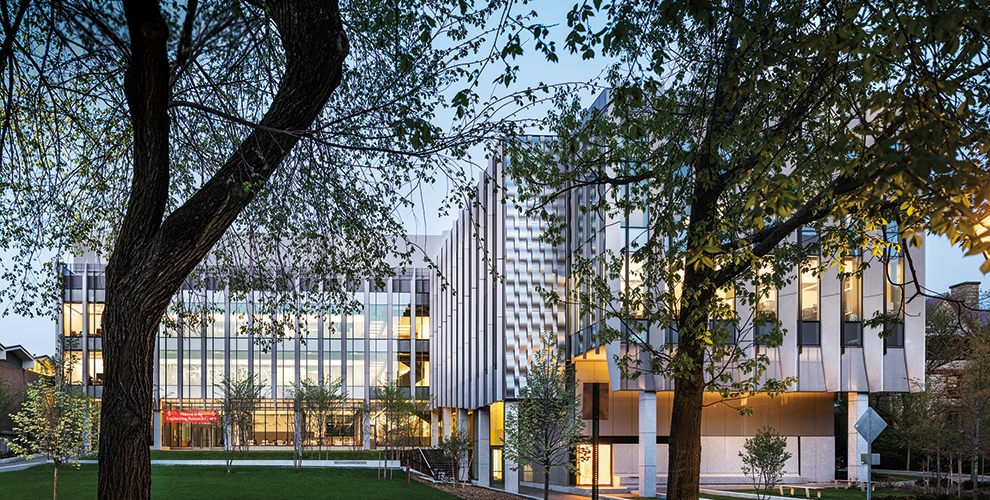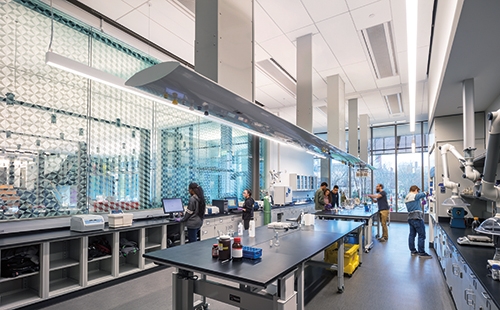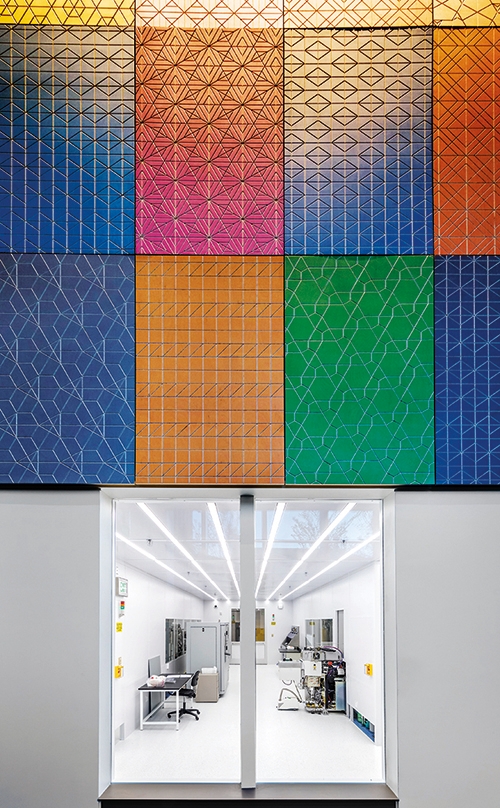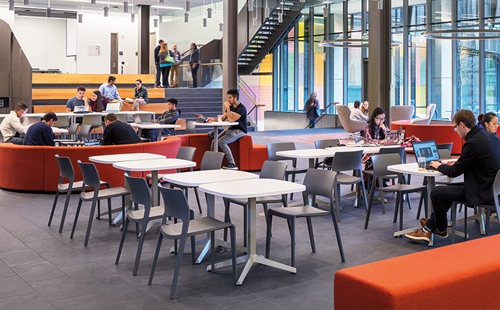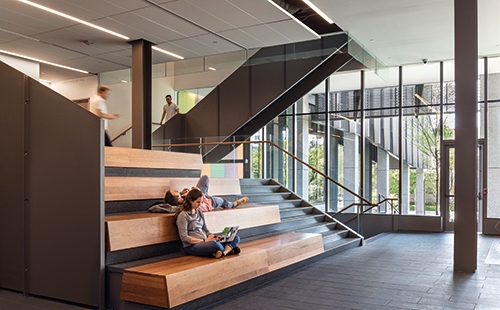A new addition to an Ivy League campus is designed to help educate generations of future engineers in an environment that’s durable and designed to last.
Editor’s note: This educational facility was completed and photographed before the COVID-19 pandemic.
Nearly 120 dedicated student workstations and 22 research labs and cleanrooms make up the core of the new Engineering Research Center at Brown University in Providence, Rhode Island.
The research taking place here has special requirements. “Because we’re in a lab environment, we had to have higher-performing coatings in many areas — like in cleanrooms, where we used epoxy paints for their durability and wipeability,” says Mark Davis of KieranTimberlake, the architectural firm responsible for the center’s design. A coating of Pro Industrial™ High Performance Epoxy on the concrete walls helps keep the cleanrooms pristine.
The research labs handle different engineering focuses, including mechanical, electrical, chemical and materials research. Desks for graduate students sit just outside the glass walls.
The architectural team chose coatings here and throughout the building not only for durability but for longevity, as well. “The building was designed on more of a 50–100-year life span, rather than a shorter outlook,” Davis says. “And as we were selecting our interior coatings, it was critical that we had a product that was durable not just for day-to-day wear and tear but that could withstand and live up to the research that was happening in the building.” That research, he says, comprises a wide range of lab work, including the use of hazardous chemicals. “Everything needed to be resilient as the building is used for different purposes over its life span.”
Colorful panels designed by artist Spencer Finch — part of a larger art commission throughout the building — conceal air-handling equipment that helps keep the cleanroom beyond the window clean.
That desire for flexibility also takes shape in the building’s overall scheme. The labs, for example, were planned so that facilities could be easily assembled and disassembled as requirements changed over time. The resulting design looks more like a loft than a traditional lab and means that infrastructure such as lab piping remains exposed — and easily accessible. “We didn’t put a lot of enclosed ceilings around the lab, but we wanted it to look neat,” Davis says. Using Pro Industrial™ Waterborne Acrylic Dryfall in a custom gray color for all ceiling, piping, lighting and ductwork surfaces creates a uniform appearance. “It was critical to making that all read evenly and cohesively, and getting a good coat that would work across multiple materials,” he says.
An exposed steel structure and walls of glass come together with concrete walls, floors and 15-foot ceilings in the building’s ground-floor gathering space, the Commons.
On Track for LEED Gold
The team is proud that its efforts, including the use of ProMar® 200 Zero VOC coatings on most key surfaces, helped to put the building on track to earn LEED Gold certification. But they’re especially proud that the building has drawn in the students, faculty and staff it was designed to serve. “Brown really prides itself on an interdisciplinary approach to education, and one of the strategies for the School of Engineering was to form tighter bonds with other departments within the university — and having facilities that are outward facing,” Davis says.
A steel stairway coated with Pro Industrial™ Pro-Cryl® Primer and ProClassic® Waterborne Interior Acrylic Enamel crisscrosses the building’s three floors in the gathering space known as the Commons.
Answering the call is the Commons, where a café, lounge area and bleacher seating next to the main stairwell have come together as a welcoming space. “It’s a runaway success,” Davis says.
Putting the Best Coatings to Work on This Project
ProMar® 200 Zero VOC Interior Latex Paint
Used on concrete walls and gypsum board walls and ceilings in the Commons and lab spaces.
Pro Industrial™ High Performance Coatings
Multiple products from this line used throughout the building, including concrete and gypsum board walls in the cleanrooms.
Loxon® Block Surfacer
Used on concrete masonry wall units.
ArmorSeal® Floor Coatings
Used on painted concrete floors.
H&C® ClarishieldTM Water-Based Wet Look Sealer
Used on sealed concrete floors.
ProClassic® Waterborne Interior Acrylic Enamel
Used on steel doors and frames.
Photos by Warren Jaffer and ©Peter Aaron/Otto


